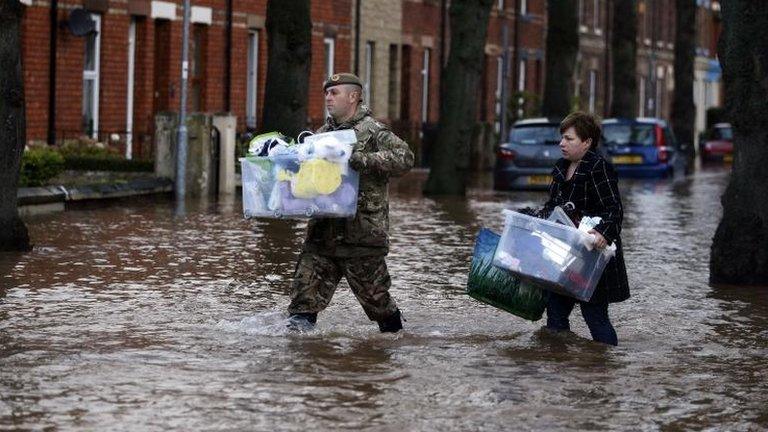Storm Desmond: Defences against indefensible floods
- Published

"Exceptional" rainfall overwhelmed recently modified flood defences in Cockermouth, Cumbria
On Friday evening, residents of Cockermouth watched in disbelief and horror as floodwater once again returned to the streets of the Cumbrian town.
They hoped they had seen the back of the unwelcomed intruder that devastated hundreds of homes and businesses in 2009. They hoped the construction in 2013 of a £4.4m scheme - including the UK's first self-closing flood barriers - would have prevented such scenes from being repeated in their lifetime.
It did not. Why?
"The defences worked but the amount of rain, and the water in the river, overtopped them," explained Environment Agency director of flood and coastal risk, Alison Baptiste.
"Whenever we build defences, we build them to a certain height but that does not mean that will prevent flooding because you can always get water levels higher than that, in which case it will go over the top."
That is what has happened in Cockermouth, Carlisle and Keswick, she told BBC News.
Ms Baptiste explained the height of a flood defence was determined by a number of factors: "We aim to provide the best possible protection for a community that can be justified technically and economically and actually fits within the community.
"You could build walls higher and higher but that would effectively cut the community off from the river, meaning people would not be able to enjoy the river and the environment in which they live, which - most of the time - is flood-free."
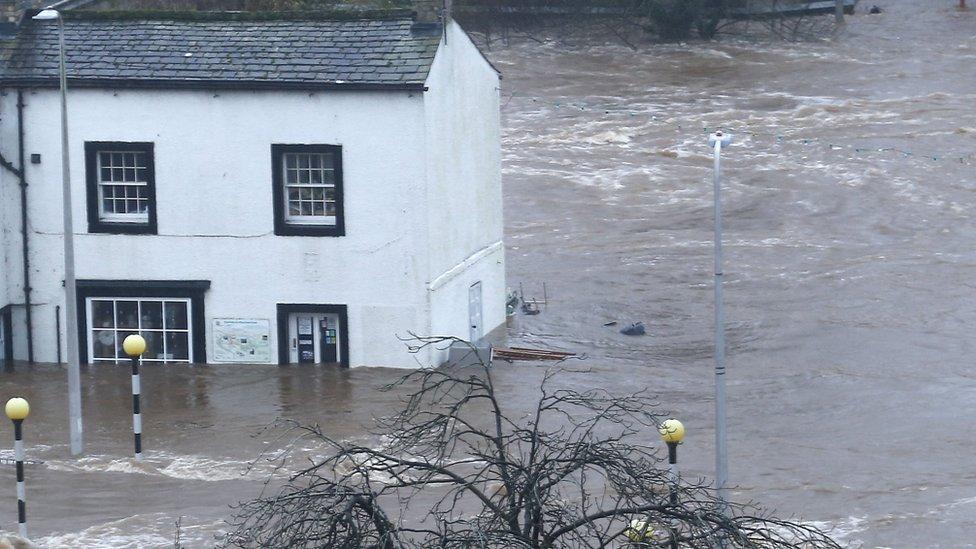
Roads in low-lying communities became part of the river system
When designing flood defences and their location, she said the agency used complex evidence-based computer modelling to help them understand how floods in an area would behave.
Once at-risk communities have been identified, the Environment Agency then has to prioritise where to build the defences.
"Through our modelling and our mapping, we identify the communities that are at risk. Those that are at highest risk are the ones we prioritise first," she explained.
As well as considering the number of homes and the economic activity in an at-risk area, the agency also considers the type of flooding - for example those in 2004 in Boscastle, Cornwall.
"It is a tiny community but the flooding was very deep and there was significant risk to life, so we also take that into account. It is not just the number of houses and the economic activity in an area, but also the impact on infrastructure and the risk to life."

The impact of Storm Desmond was exacerbated because the "exceptional" levels of rain fell on to already saturated land, the Met Office explained, external.
It said Honister in the Lake District, Cumbria, recorded 13.4 in (341.4 mm) of rain in just 24 hours, a record amount for the UK, beating the previous record set in November 2009.
This resulted in a vast volume of water running off the surrounding hills into the area's river systems, overwhelming communities' flood defences, even those recently improved after damaging floods less than a decade ago.
Helicopter footage reveals the scale of widespread flooding in Cumbria as flood waters reach their peak in the wake of Storm Desmond
Royal Academy of Engineering fellow Prof Jim Hall said this was a reason for concern.
"The worrying aspect of these floods is that they are causing such severe damage even after major steps had been taken to improve the flood defences in Carlisle and Cockermouth and to improve the resilience of the nation's electricity infrastructure," he said.
"We know that there is always a chance that flood defences can be exceeded in the most extreme floods. Storm Desmond means that we will have to re-evaluate standards of flood defence and then think again about what needs to be done to reduce the risk of major damage and disruption to flood-prone communities."
Stemming the flow
One method being explored is natural flood management. This approach is designed to reduce the flow of rainwater from surrounding hills into river systems, easing the pressure on defences further downstream.
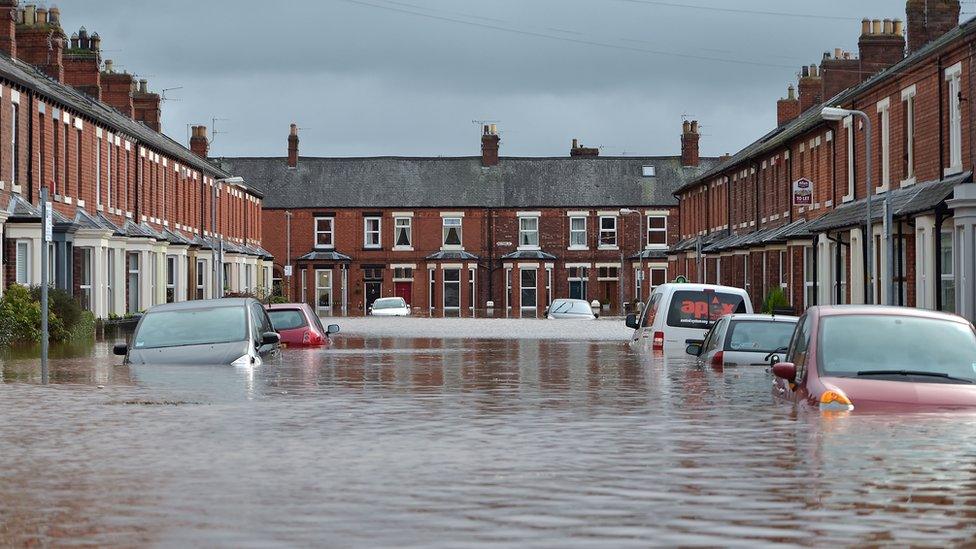
Thousands of properties were evacuated as defences were breached
The Flood and Water Management Act 2010 encouraged local authorities and land owners to consider this novel approach.
"With increasing changes in weather patterns and more frequent severe storms, we need to look at bigger opportunities to create more water storage further up our river catchments," said Roger Falconer, professor of water management at Cardiff University.
"These might include small dams in the headlands or working with farmers to build embankments around fields to store water during the winter months when cattle are housed indoors."
In urban areas, large areas - such as roofs, roads and driveways - are impermeable to water. The 2010 Act recognised the need for developers to landscape areas in a way that this water is absorbed into open ground rather than overwhelming drainage systems.
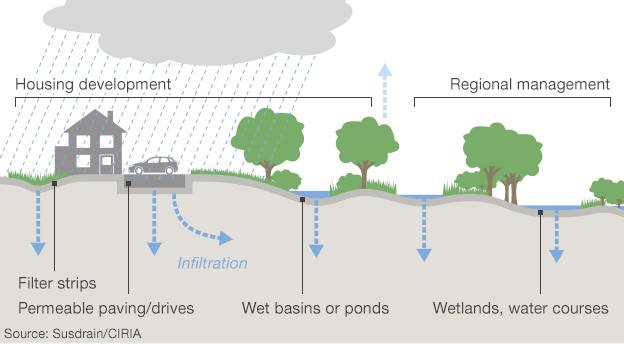
David Wilkes, global flood resilience leader at Arup, a built-environment consultancy, said that even with the best defences, it was not possible to stop all floods.
"It would be almost impossible and disproportionately expensive to build flood defences to protect against every conceivable storm," he told BBC News.
"But we can reduce and manage the risks and create resilient towns and cities, even if they are not completely resistant to flooding. Adaptations such as flood relief channels, hinged boardwalks that rise and fall with the water level, or even elevated housing with floors that "float up" to allow floodwater in and out quickly without causing structural damage.
"These may seem extreme but may be strategies we need to adopt to protect against climate change, because the impact is devastating for those affected as it disrupts our homes and way of life."
Flood resistance and resilience
For businesses and homeowners in at-risk areas, the Environment Agency - via the gov.uk website - offers practical advice on how people can protect their homes and businesses from flooding,, external including an interactive guide on ways to reduce flood damage, external.
It also offers advice on how to develop a "flood plan, external" and what you and your neighbours need to do once a flood warning has been issued for your area.
The National Flood Forum, external, a charity that is dedicated to representing people living in areas at risk from flooding, has produced the "blue pages", which is an independent directory of flood protection products., external
- Published5 December 2015
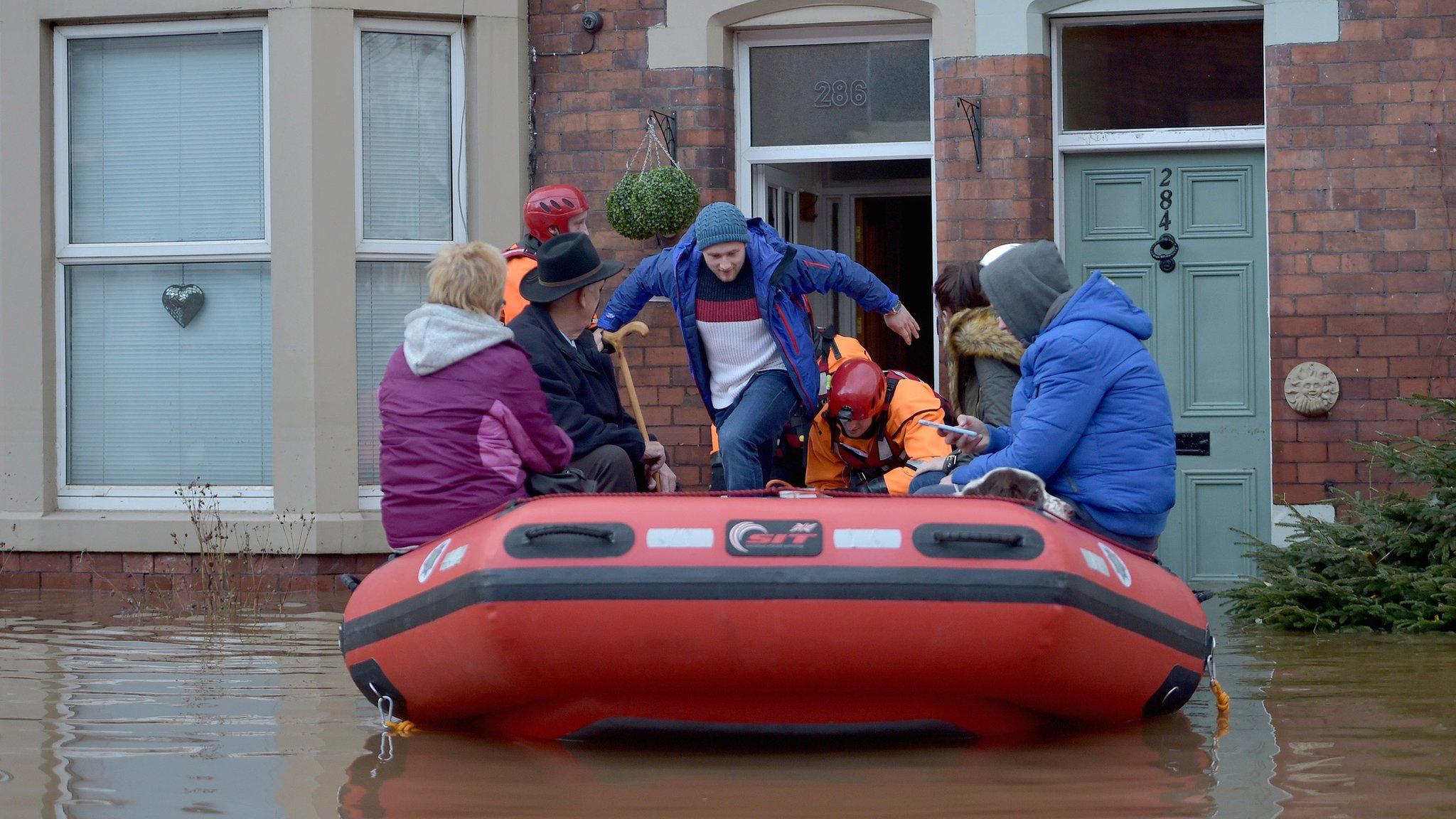
- Published7 December 2015

- Published22 February 2022

- Published23 December 2015
